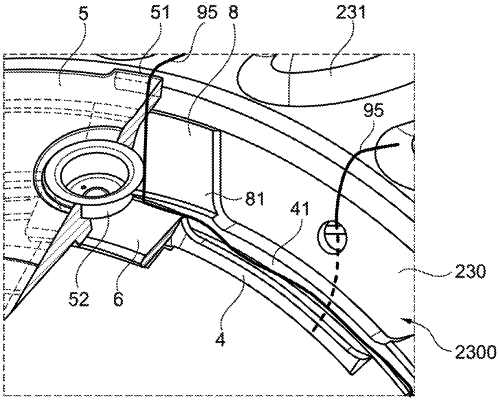| CPC F02K 3/06 (2013.01) [F01D 5/02 (2013.01); F01D 25/32 (2013.01); F05D 2220/36 (2013.01); F05D 2260/31 (2013.01); F05D 2260/40311 (2013.01)] | 16 Claims |

|
1. A fan of a gas turbine engine, which has:
a fan disk with a plurality of fastening elements, formed as brackets which are spaced apart in a circumferential direction and which project axially forwardly from the fan disk and which are formed directly on the fan disk or on a part connected to the fan disk,
a nose cone which is arranged upstream of the fan disk and which is connected by the fastening elements to the fan disk, wherein the nose cone, at an axially rear end region, forms an axially rear edge adjacent the fan disk,
on an axially front side of the fan disk, an encircling periphery which runs in an encircling manner in the circumferential direction and which runs radially inside of the axially rear end region of the nose cone, wherein the encircling periphery includes a concave indentation that forms a circumferentially continuous channel around the encircling periphery, the axially rear edge being positioned axially forward of the axially front side of the fan disc to form a radially extending axial gap between the axially rear edge and the axially front side of the fan, the radially extending axial gap creating a radial passage between an exterior of the nose cone at the axially rear end region and the concave indentation to allow water ingress from the exterior of the nose cone at the axially rear end region to the concave indentation,
wherein the encircling periphery, the concave indentation and the circumferentially continuous channel extend circumferentially a complete 360°.
|